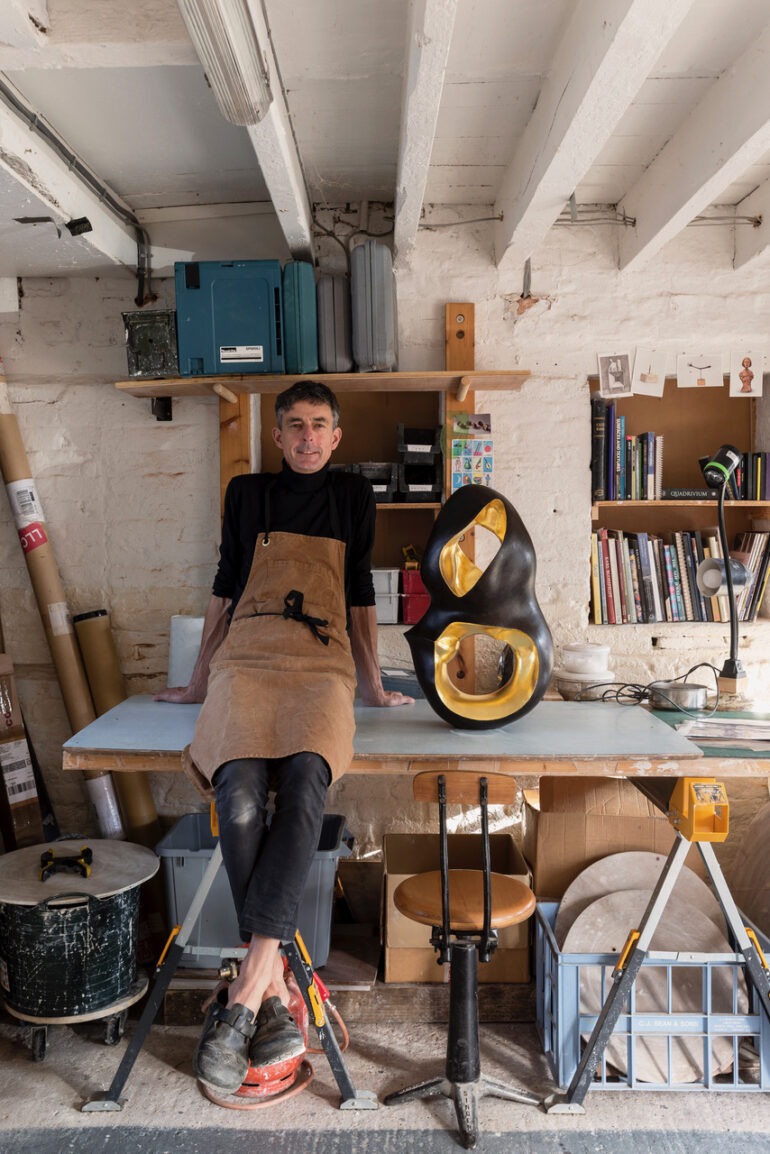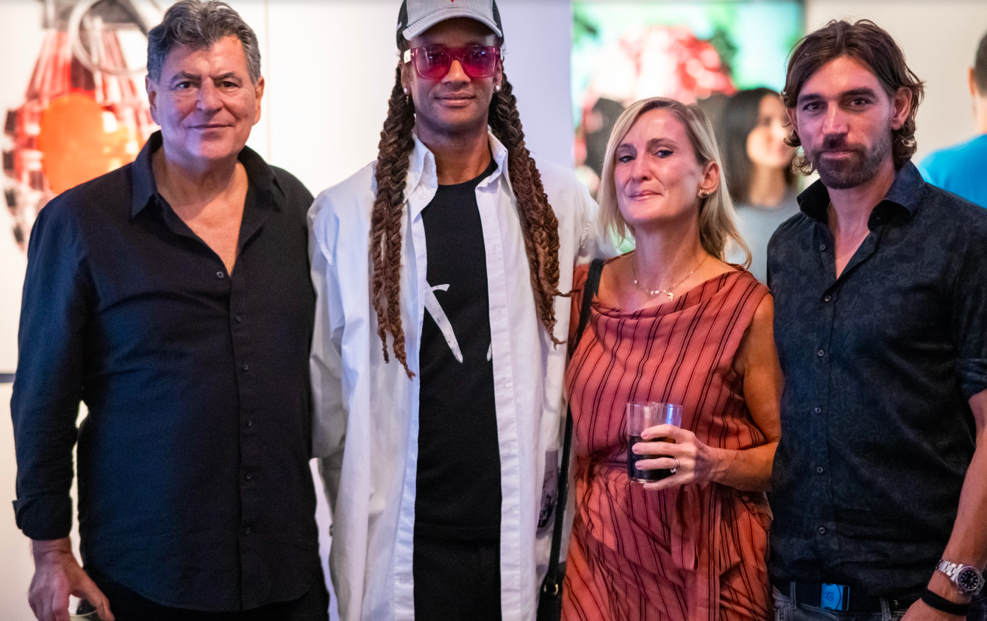In this edition of Culturalee in Conversation, we talk to sculptor Matt Sherratt, whose work explores the delicate balance between stillness and movement, presence and absence. Drawing on influences from meditation to the modernist legacies of Barbara Hepworth and Constantin Brancusi, Sherratt reflects on how he navigates the relationships between space, time, and material, and the central role of the void in his creative process. We also discuss the subconscious as a source of form and energy, and his recent large-scale commissions in China and at the Waldorf Astoria in New York City.
Your sculptures often feels suspended between stillness and movement, presence and absence. How do you navigate the relationship between space, time, and material when you begin a new piece?
For me, stillness and movement are like a dance suspended in time. I’m drawn to absence because it is both subtle and powerful — it creates a space where the viewer’s subconscious can complete the work. Presence, by contrast, is about consciousness, the immediacy of being framed in a moment.
Clay is the perfect medium for this exploration. Highly responsive and fluid, it begins soft and pliable, gradually firming as it dries. Each fresh piece of clay feels abstract and intimate, carrying the potential to evolve into something alive. From nothing, life emerges — and this is the moment where the work truly begins to happen.
Intuition plays a vital role at this stage. It is a deep, internal force that filters into the making and sets the direction of the piece. Tapping into this source allows the creative process to flow freely. I am fascinated by consciousness — a realm often overlooked, yet rich with insight into ourselves. It is within this space, between the seen and unseen, that my work seeks its resonance.
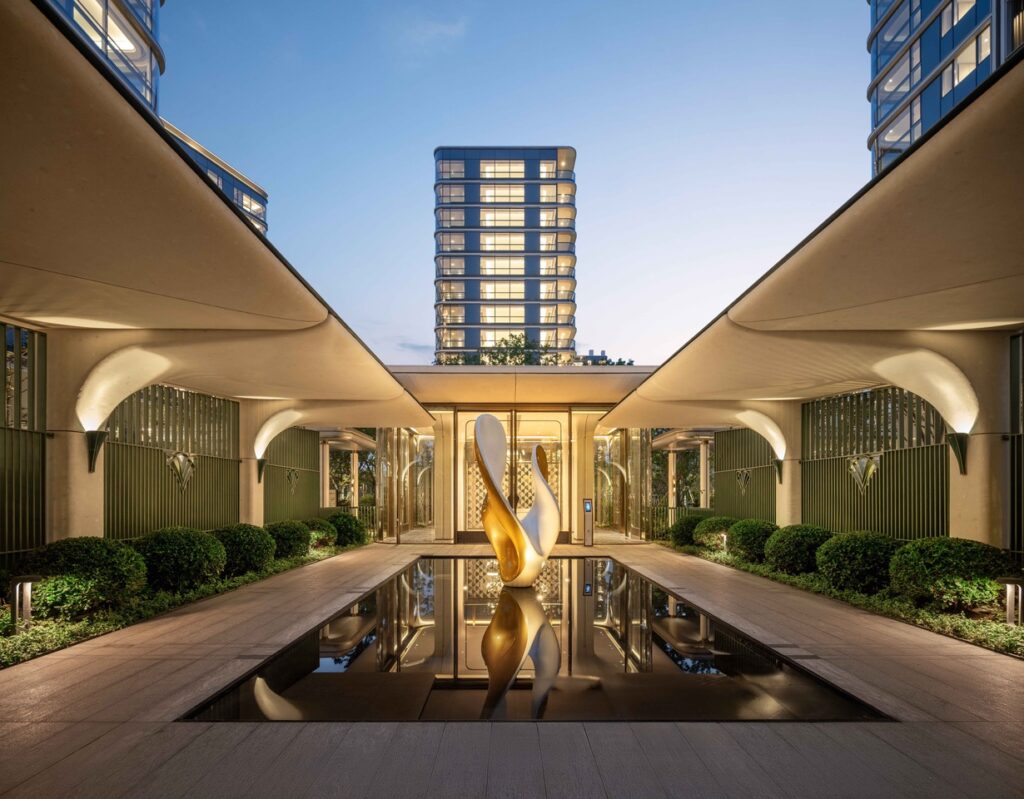
You’ve spoken about using a meditative practice when you create your sculptures. How do spirituality and meditation shape your approach in the studio, and do you see this reflected in the calm, contemplative aura your sculptures radiate?
For me, making art is about being present. Meditation allows me to focus — not by removing thoughts, but by observing them without getting lost in them. It’s easy to follow a thought and spiral down a rabbit hole, and that can ruin the flow of a day. My daily yoga practice is non-negotiable; every morning I spend time on the mat. That practice carries into the studio — I arrive feeling fresh, grounded, and connected in mind, body, and spirit. The release of tension in the body reflects subconsciously in the work. The calmness people sense in my art comes directly from this approach.
My studio is a place where I can close the door to the outside world. It gives me both solitude and an open arena within the mind. It’s a space where presence and process take priority over distraction, and that makes it a kind of sanctuary. The discipline of yoga and meditation prepares me for that space, but the studio itself completes the cycle.
I wouldn’t say I’ve perfected it — we all have good and bad days. But I see that as the nature of life itself. My work reflects that ebb and flow: the challenges, the tensions, and the calm. What matters is showing up and letting those experiences translate through the process of making.
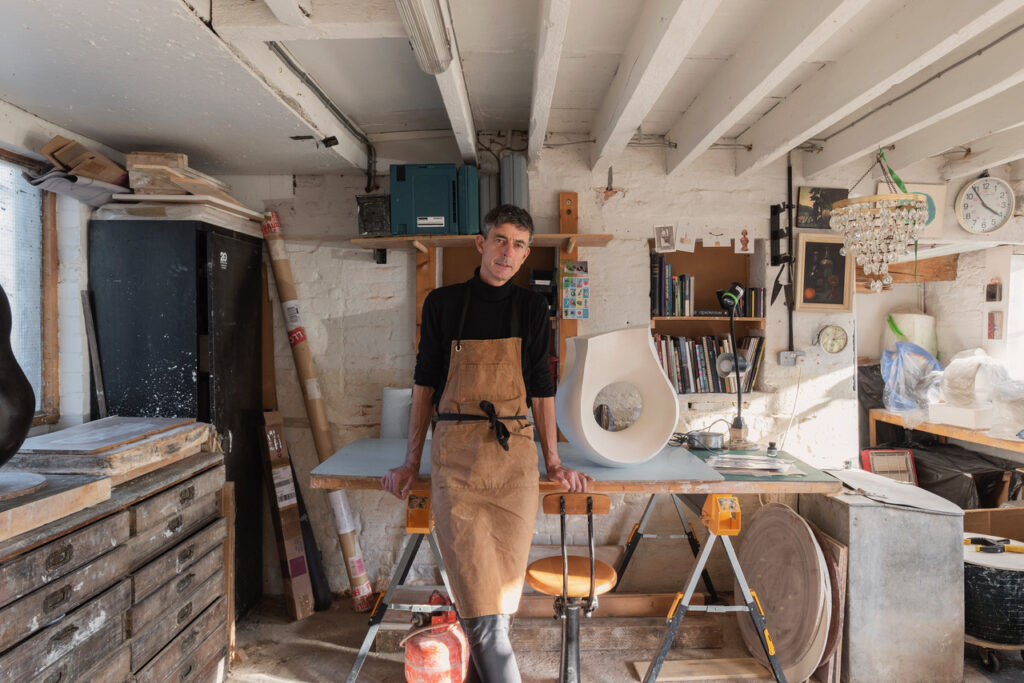
Your finishes range from light-bouncing lustre glazes to light-absorbing terra-sigillata surfaces. What role does light play in your work, and how do you decide which finish best expresses the essence of a particular form?
Light is everything in my work. I’m fascinated by contrasts — how curved interior forms bend and reflect light, while the exterior surfaces absorb it. The way a piece responds to natural light or low-level interior light is what brings it alive. In a sense, the light itself becomes part of the sculpture.”
I’ve worked with terra sigillata for a long time because of its beautiful surface and tactile quality. Over the years, I’ve refined my recipe, and I’m particularly pleased with a dark slip that has the depth and richness of a bronze patina. The sheen it produces perfectly complements the forms I create — it feels like a natural fit between material and shape.
There’s still a lot of development ahead with surface finishes, but I’m also excited about the possibilities of rapid prototyping and translating my forms into other materials, like marble or gold leaf. Each material has its own voice, and seeing how the same form transforms under different surfaces is deeply satisfying.
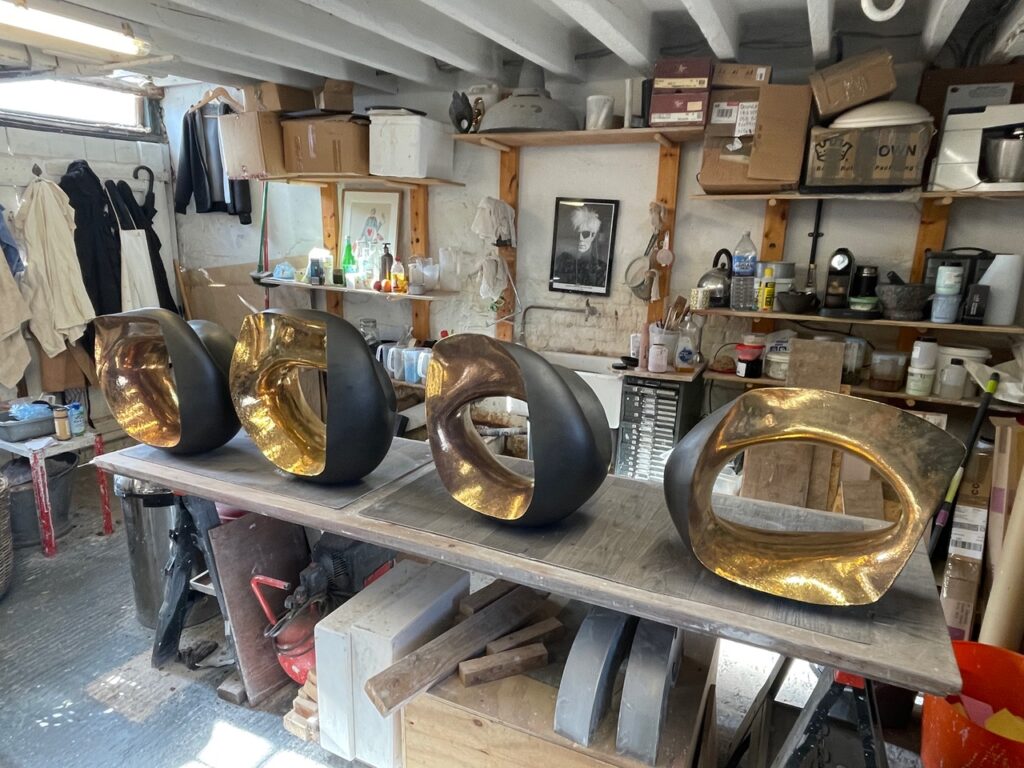
Your sculptures contain some subtle references to masters of Sculpture such as Barbara Hepworth and Constantin Brancusi. Do you feel inspired by them or by natural land art like that of Richard Long?
Yes, the artists you mentioned have been a big influence. I’m drawn to their simplicity combined with a highly captivating presence. Each has an unmistakable style. For me, inspiration works almost like osmosis — it subtly filters in over time rather than being something I consciously imitate.
I think there’s a universal language of sculpture that feels almost otherworldly. So much cannot be explained in words but can be expressed visually through form. That’s what I’m drawn to — the way sculpture communicates on a level beyond language.
For me, it’s about how the form interacts with its environment. The right placement can transform a space — in fact, the space can feel incomplete without the work. I think of the large-scale projects by UAP as an example: the sculpture doesn’t just sit in the space, it commands it, and if it were removed, the atmosphere would change entirely. That sense of dialogue between form and environment is something I’m always chasing in my own practice.

Do you feel a kinship with artists whose love of the natural world or spirituality influenced your artistic language?
Last year I had the privilege of going on a cycle tour of India with the American sculptor Richard Rhodes. We began in Ahmedabad, Gujarat, and cycled towards Rajasthan, visiting some of the most spectacular UNESCO World Heritage Sites along the way, including the Sun Temple at Modhera, Rani Ki Vav, Kumbhalgarh Fort, Chittorgarh Fort, Bundi, and the Kandariya Mahadeva Temple. Many of these places are far removed from the tourist trail, and it felt extraordinary to experience them in such an intimate way. The journey itself could fill another interview entirely.
The trip was inspirational in ways both subtle and profound. Cycling allowed us to absorb India through all five senses — its colour, intensity, and vibrancy unfolding at every turn. Sharing this experience with another sculptor meant we could exchange ideas about art, landscape, and culture as we travelled, deepening my connection to sculpture through a different lens.
More recently, I’ve been struck by artists whose work resonates with my own dialogue between nature, material, and place. The exhibition of Andy Goldsworthy reaffirmed my admiration for his use of natural materials and the way his work becomes a portal to the natural world. At Houghton Festival, I also attended a talk by Chris Levine, who presented a site-specific laser installation. He spoke about meditation and his fascination with ancient sites — ideas that strongly echoed my own thoughts about making art, and about how creativity can act as a bridge between past and present, the material and the spiritual.
Your work plays with the dance between negative and positive space. How do you choreograph that visual balance of edge and void, and what draws you to this exploration?
It can sometimes be difficult to explain what appeals and why. For me, it’s about a feeling — when something is right, there’s a sense of harmony, almost like awe, that can stop you in your tracks. I often compare it to music: a pared-down dance track with a deep bass line played through a great sound system — it simply takes you over.
In my work, I’m always searching for that “sweet spot,” where the balance between positive and negative space creates resonance. As in music, silence is often as important as sound; the spaces in between give the work its power and clarity.
Intuition is my compass. Each piece builds upon the last, allowing my practice to evolve while remaining anchored by a clear sense of signature. Whether working by hand in clay, collaborating on monumental works in stone and steel, or responding to the energy of place, my process is driven by a constant search for that “sweet spot” where form, space, and feeling come into harmony.
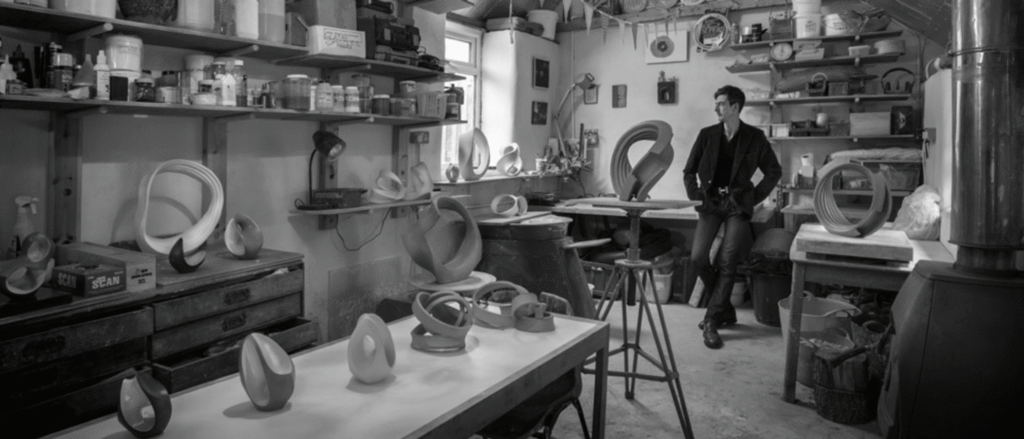
You’re currently involved in a new project in China and at the Waldorf Astoria New York. Could you tell us more about these projects and how working in such contrasting cultural settings is shaping your creative process?
Although these projects were set in contrasting cultural contexts, the work itself sits comfortably in both. I believe the pieces are well resolved and carry a universal presence, which allows them to bridge those differences naturally. For the Waldorf Astoria in New York, the dark bronze patina finish was chosen to harmonize with the refined interior of the hotel, creating a dialogue with its elegance and history.
The creative process for both projects involved close collaboration with the clients. In each case, there were lengthy consultations before receiving final approval, as clients are often still discovering what they truly want. Once the go-ahead is given, the work is usually required within a tight timeframe, which can be challenging — but I find that working to a deadline brings a certain energy and excitement to the making process.
The Waldorf Astoria project was particularly personal, as the pieces were entirely handmade by me. These smaller ceramic statement works are highly labour-intensive, involving wheel-thrown forms that are then distorted and coiled, giving them their distinctive character.
By contrast, the Chinese project with UAP was a completely different experience. They approached me after sourcing my work, and with their extraordinary resources they were able to take the project from conception to completion with remarkable efficiency. Their design team developed 3D models and produced the pieces in both marble and stainless steel at lightning speed. This industrial scale of making stood in striking contrast to my hands-on, studio-based ceramic process, yet both outcomes felt true to the essence of my practice.
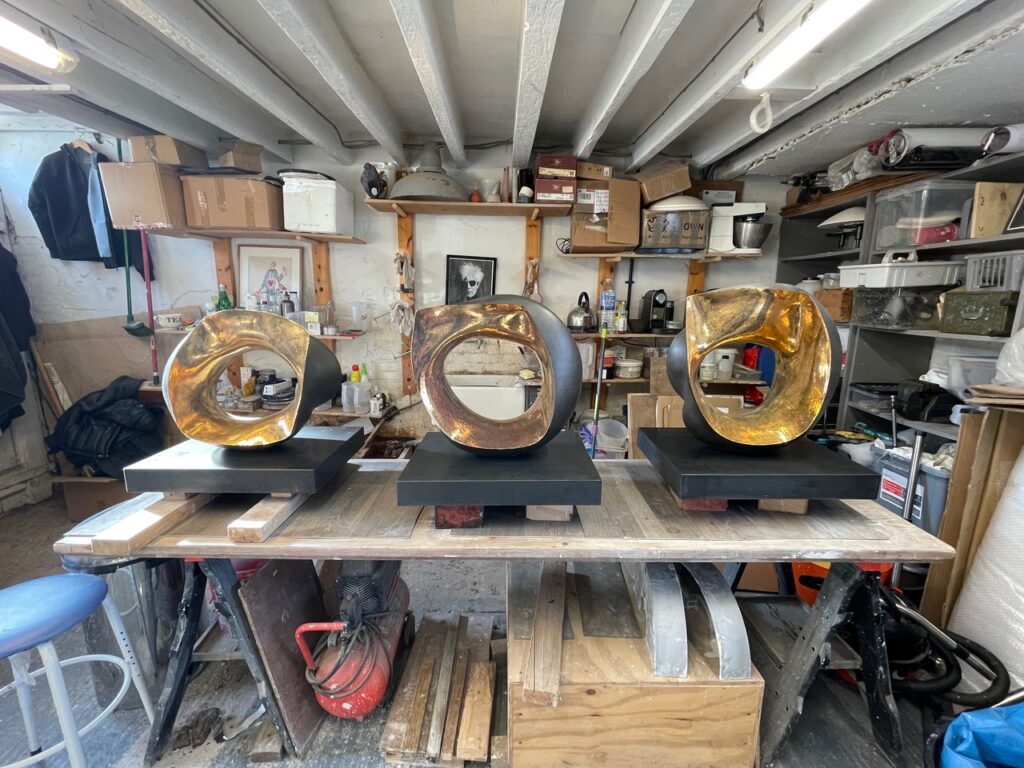
You’ve lived and worked in places from North Wales to Cheshire, and even held residencies at national institutions. How has this journey of place and community impacted the evolution of your practice over the years?
I’ve been fortunate to work in a wide range of studios and residencies over the years, from Standpoint Studio in Hoxton Square to Vanguard Court in Camberwell, and further afield in places like Llangernyw in Snowdonia and Cholmondeley Castle in Cheshire. Each location has offered a unique experience and played a part in shaping the development of my practice.
Working in London was highly stimulating. The studios were often compact and full of energy, with talented artists working side by side. That intensity was exciting, but also relentless at times. Moving to the countryside marked a profound shift in both pace and perspective. Here, I am surrounded by the changing seasons, a closeness to nature, and the opportunity to step outside of the rat race.
Snowdonia, in particular, has been deeply influential. The light there can be extraordinary, shaped by a unique microclimate where you might experience all four seasons in a single day. The landscape is full of energy, with ancient sites nearby — including one of the oldest living yew trees, thought to be around 3,500 years old. With spectacular mountains and beaches within easy reach, it offers not just an inspiring backdrop for my work but also a grounding influence on my own wellbeing.
For more information visit: https://mattsherratt.com


